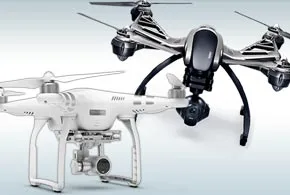
NEWS ANALYSIS: Commercial drone pilots no longer have to fill out pages of paper just to fly a short mission, but not all restrictions have been eliminated and you still need to pass a test.
When the Federal Aviation Administration first released rules for operating drones they were for drones operated by hobbyists, and they were very similar to the rules for flying model aircraft.Commercial uses were possible, but required a burdensome approval process that many ignored, choosing to fly their drones illegally. Worse, anyone operating a drone had to be a licensed pilot, which complicated the process.Now that’s all changed. The FAA has released a new regulation, known as Part 107, which allows commercial operations of what the agency calls unmanned aircraft systems (UAS). For those who don’t want to read all 624 pages, there’s also a summary.The new rule specifically states that commercial operations are allowed; it says what the operational limitations are and what the pilot certification involves. There’s also some information on the new parts of the process, such as approval by the Department of Homeland Security. Commercial drones must be within 400 feet above ground level, except when they’re near a structure, where they can go as high as necessary as long as they’re within 400 feet of the structure. This is good news for drones that are used to inspect buildings, bridges, cell towers and other tall structures, where it is a lot easier and safer to use a drone for remote inspections rather than find a person willing to do it. When they’re flying, the drones must be operated within the line of sight of the Remote Pilot in Command, which is the person who is directing the flight. But now you can have more than one person flying the drone (such as a camera operator, and a person managing the flight controls). You can also have an observer who can be the person keeping eyes on the drone.While you can use the drone’s camera while flying, it does not meet the FAA’s see and avoid requirements. So you still have to have your eyes on the drone while flying it.Another important change is that the FAA rules now allows an unlicensed person to fly a drone, as long as they’re supervised by someone with the remote pilot certificate. This means that you can have one licensed pilot and a lot of assistants, as long as the licensed pilot is actually in charge and on site with the drone operations.To qualify for a remote pilot license, the operator must either pass an FAA test, or they can have a pilot’s license. Applicants with a pilot’s license will get their temporary drone license immediately. Others must wait for the DHS vetting process.Other new features include approval for drones to carry external loads, which means you can use drones for delivery, but unfortunately for Amazon's experiments with drone-borne freight service, autonomous operations aren’t part of the deal.
- eWeek